Acupuncturists
Receive instant NCCAOM (pda's), CA (ceu's), and FL credit.
NJAAOM members
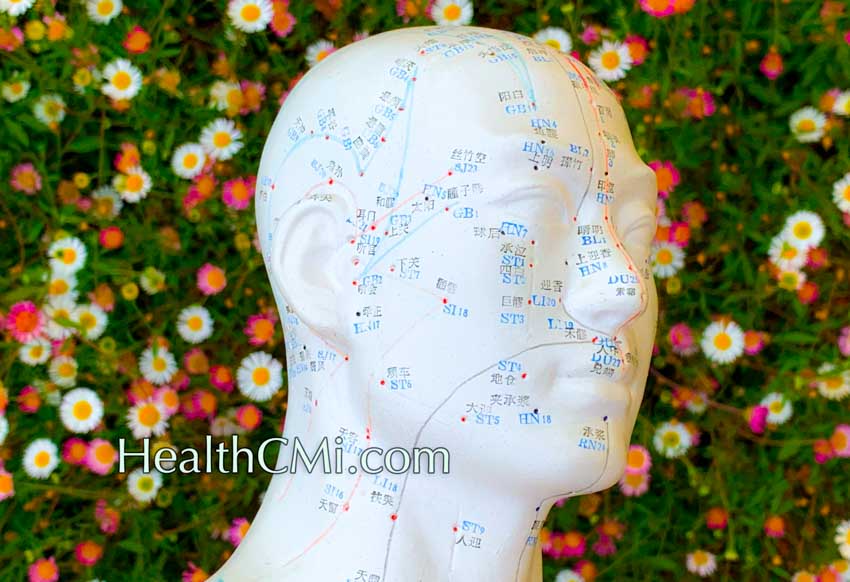
HealthCMi offers up to 4 free live webinars for active NJAAOM members per year. To request a free coupon code to redeem this offer, please select the Support menu above and click Contact Us. Please state your name in the contact form, NJ license number, and note that you are an NJAAOM member in the message.
Enter your information and we will send an email within 24–48 hours providing you with a 100% off coupon. Next, simply select your live webinars at HealthCMi, Add To Cart, and checkout with the free offer coupon. If you sign up but cannot attend, please contact us within 24 hours prior to the webinar or the absence will be counted as one of your courses.
To learn about live webinar content, visit the following: Live Webinars >
Conception Vessel Acupoints
Samples of Course Materials
Sample from acupoint section:
CV17 (Central Altar, Shanzhong, 膻中)
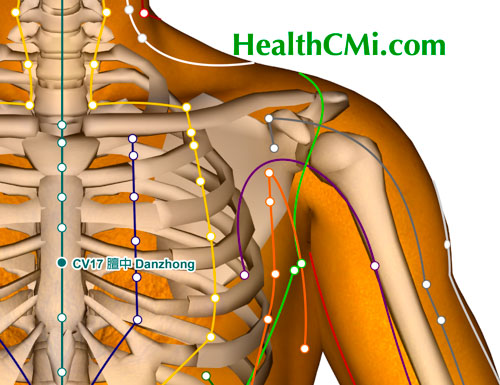
- insufficient lactation, lumps on the breast, breast pain
- nausea, vomiting saliva
- cold in the chest
- oppression of the chest
- asthma, shortness of breath, dyspnea, coughing
- chest pain
- difficulty swallowing
- palpitations
Sample from acupoint section:
Luo-connecting Channel
- Symptoms of luo-connecting excess: pain on the skin of the abdomen.
- Symptoms of luo-connecting deficiency: itching on the skin of the abdomen.
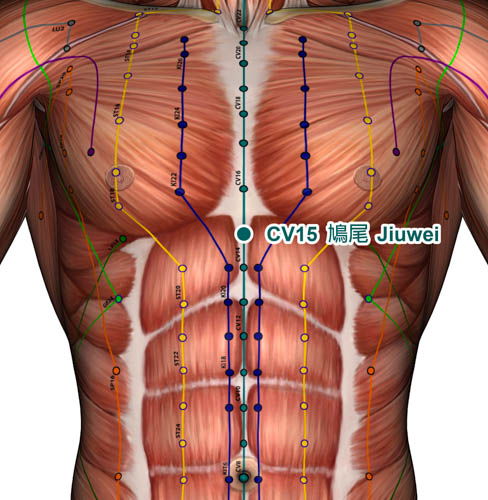
Select Course
Sample from research section:
Acupuncture Alleviates Endometriosis
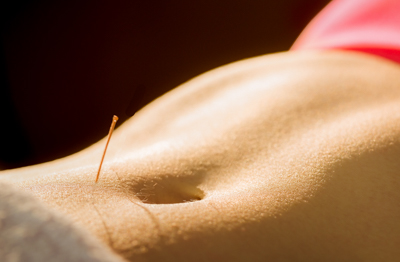
Acupuncture is effective for endometriosis relief. Research published by Changhai Hospital Affiliated to Second Military Medical University finds electroacupuncture more successful than a powerful hormone antagonist for treating endometriosis. This is consistent with an independent laboratory study, whose findings indicate that the combination of acupuncture and herbal medicine reduces the size of ectopic endometrial tissue and downregulates levels of vascular endothelial growth factor (VEGF).
Acupuncture outperforms mifepristone for the treatment of endometriosis. In a six-month randomized clinical trial conducted by Zhang et al., patients receiving electroacupuncture achieved a 94.4% total effective rate, while the other group of patients receiving the pharmaceutical mifepristone achieved a 91.7% total effective rate. In addition, compared with the mifepristone group, the electroacupuncture group had significantly lower CA 125 levels and recurrence rates. CA125 (cancer antigen 125) is an important biological marker for determining the severity of endometriosis. High CA 125 levels are correlated with severe endometrial conditions and the presence of uterine fibroids. A CA 125 test is also used to monitor ovarian, peritoneal, fallopian, and endometrial cancers.
A total of 72 patients diagnosed with endometriosis participated in the study. The patients were randomly divided into two groups: treatment and control. The electroacupuncture treatment group had 36 patients. The mean age was 33 ±6 years and the average course of disease was 33.6 ±18.9 months. The drug control group had 36 patients. The mean age was 35 ±7 years and the average course of disease was 31.4 ±16.9 months. There were no significant statistical differences in age or course of disease relevant to patient outcome measures for patients initially admitted to the study.
The control group was given 12.5 mg of mifepristone tablets once per day for six months. The treatment group received electroacupuncture at the following acupoints:
- CV6 (Qihai)
- CV4 (Guanyuan)
- CV3 (Zhongji)
- EX-CA1 (Zigong)
- SP8 (Diji)
- SP6 (Sanyinjiao)
- LI4 (Hegu)
- LV3 (Taichong)
Upon disinfection of the acupoint sites, 0.30 mm x 40 mm filiform acupuncture needles were inserted into the acupoints to a standard depth. After elicitation of a deqi sensation, the acupuncture needles were connected to an electroacupuncture device. The bilateral Zigong points were connected to Guanyuan and Zhongji. A continuous wave (70 Hz, 3 mA) was applied. The needles were retained for 30 minutes.
The electroacupuncture treatments were administered every two days (except for during menstruation) for a total of six months. The results were measured after six months of treatments and the patients were followed up with a one year exam to calculate the recurrence rate.
The results demonstrate that electroacupuncture is an important therapeutic option for patients with endometriosis. Both methods provided significant improvements for patients. The electroacupuncture treatment method resulted in more significant positive patient outcomes, especially in reducing CA 125 levels and diminishing recurrence rates in the year following treatment. As a result, the researchers conclude that electroacupuncture is an effective protocol for the treatment of endometriosis.
The laboratory findings of another research study are consistent with the one above...
More in course materials...
Select Course
#1 – 11 True Meaning of Lung Acupoints
Samples of Course Materials
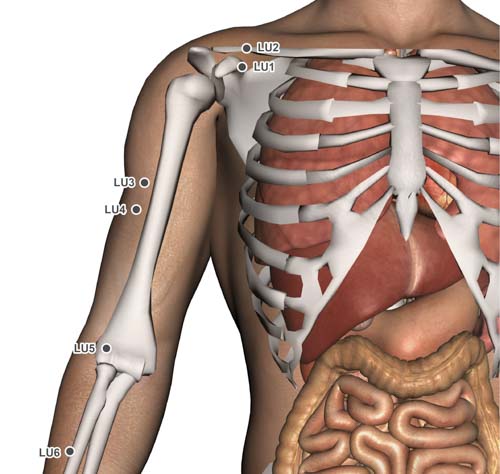
Sample from Introduction Section
Lung Arm Greater Yin Channel
The lungs have yang and yin characteristics. The yang character of the lungs is due to the fact they are on the upper portion of the body and are connected to and control the surface; the lungs control the breathing and skin. According to Chinese medicine principles, the lungs are associated with metal, tiger, and autumn, which are all associated with yang. Because of the yang characteristics, we say that yang embraces yin.
The yang of the lungs helps to shower yin nourishment to the lower portions of the body; the lungs descend the qi. The roots of this are in the ancient Chinese medicine conceptualization that the lungs shower nourishment with…
More in course materials…
Sample from LU1 Section
LU1 (Zhongfu, Central Mansion) 中府
LU1 is lateral and superior to the sternum at the lateral side of the first intercostal space, 6 cun lateral to the Conception Vessel (Ren Mai). LU1 is needled 0.5 to 0.8 inches obliquely and laterally. Avoid the lungs by avoiding a medial or deep insertion to prevent pneumothorax.
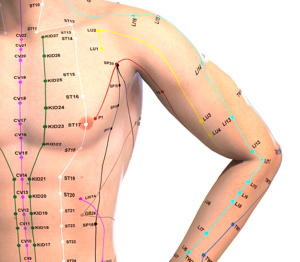
Zhongfu is translated as central mansion. It is the front mu point of the lungs and is the meeting point of the lung and spleen channels. Primary uses are for the treatment of coughing, asthma, and respiratory conditions.
LU1 is the Emergence
Zhongfu is the central mansion and is located over the lungs and the upper portion of the body, above all the major zang-fu organs. The lung channel is where the flow of qi through the channels starts, the lung time of day is 3–5 am, it is the beginning of a new day. LU1 is the first point on the lung channel. This point is the first major acupoint where the qi emerges from a channel. This is akin to the emergence of the sun from the horizon in the early morning and the beginning of the universe from nothing. This is the emergence of yin to yang, from dark to light, and is akin to a newborn human from prenatal to postnatal form. As the sunshine rises up (the qi emerging at the point), it illuminates the surface of the wei (protective) qi and the internal organs.
As a point emerging from prenatal qi, its energy has a restorative function to reverse adverse affects associated with aging. Examples for use of the power of this aspect of LU1 include the treatment of loose and flacid skin with wrinkles (crepey skin), weakness of the lungs, seminal emission due to deficiency, and weakness in the regulation of...
More in course materials...
Sample from LU2 Section
LU2 (Yunmen, Cloud Gate) 云门
LU2 is in the depression below the acromial extremity of the clavicle, 6 cun lateral to the Ren Meridian. This point is needled 0.5 to 0.8 inches laterally. Deep needling and medial needling is contraindicated and may cause pneumothorax.
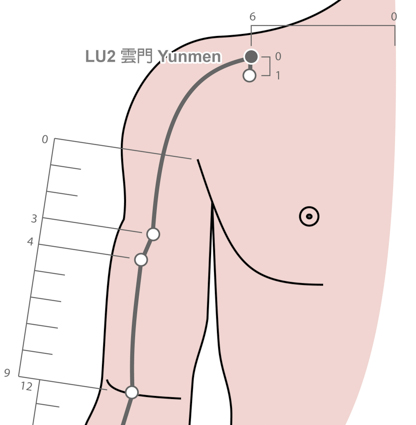
LU2 is the cloud gate and is physically located above LU1. The qi rises like the morning sun from the central mansion (LU1) and illuminates the clouds above at LU2.
The heat of the sunshine brings the moisture to the sky and forms clouds. The idea is that the light of prenatal qi creates substance in the form of moisture in the clouds. Like the conceptualization of the umbrella for the lungs, the moisture can now descend to nourish the body.
Deficiency
Examples of this nourishment include the treatment of malnutrition. LU2 helps nourish the body when combined with LU3 (Sky Mansion) to restore substance and energy back towards prenatal vitality. LU3 is the next point on the channel and is located below on the upper arm. This is the misty energy of LU2 turning into substance at LU3. Needling both points prevents the misty nourishment from leaking and dispersing…
More in course materials…
Sample from LU3 Section
LU3 (Tianfu, Sky Mansion) 天府
LU3 is located on the medial aspect of the upper arm, 3 cun below the end of axillary fold, on the radial side of medial biceps brachii.
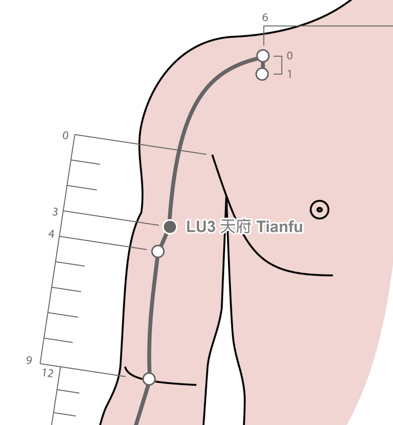
Tianfu is the sky mansion. The mansion is the body. It is a window of sky point. One is looking from the window below at the heavens above. The mist descends from the sky above to the window of the mansion/house below. The moistening nourishment descends from the sky to the body.
The mist from the clouds at LU2 condenses into fluid onto the window of LU3. The mist from the cloud gate at LU2 descends to the upper arm. It condenses into fluid to let the body absorb yin essence more easily. This is similar to steam turning into liquid. LU1 has light, LU2 has the mist of the clouds, and LU3 is the condensation of the mist into fluid.
This is why LU3 is a good choice for the treatment of a dry cough or throat. Combine LU9 and LU2 to generate yin to reduce dryness. This is useful with dryness leading to dry cough…
More in course materials...
Sample from Research Section
Acupuncture, herbs, and moxibustion are effective for the treatment of COVID-19 (coronavirus). Investigators determined that acupuncture plus herbal medicine produces significant patient outcomes for patients with COVID-19. In another independent clinical trial, moxibustion relieved diarrhea in COVID-19 patients and reduced the occurrence of positive nucleic acid results for coronavirus. Let’s take a look at both investigations.
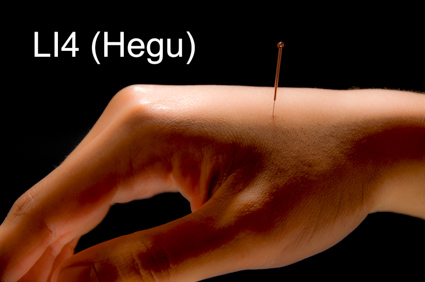
Yueyang Integrative Medicine Hospital (a Shanghai University of Traditional Chinese Medicine affiliate) researchers tested the benefits of acupuncture and herbal medicine for the treatment of COVID-19. The results of this National Natural Science Foundation of China (NSFC) funded research were published in Chinese Acupuncture and Moxibustion. A total of 33 patients from Wuhan Leishenshan Hospital participated in the study. All patients in the study were...
More in course materials...
Sample from Research Section
Acupuncture is effective for the treatment of influenza. Two independent investigations confirm acupuncture’s efficacy for fighting influenza. One laboratory investigation tested acupuncture as a monotherapy and determined that acupuncture lowers mortality rates, increases serum interferon levels, and improves the phagocytosis of viruses. Another investigation finds acupuncture effective for enhancing the clinical efficaciousness of anti-viral drugs. Let’s start with the integrative investigation and we’ll look at the acupuncture monotherapy next. Researchers from the Taizhou Municipal Hospital combined acupuncture with...
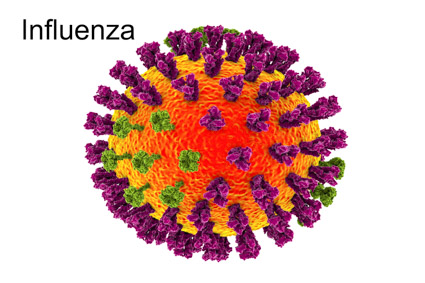
More in course materials...
About the Author
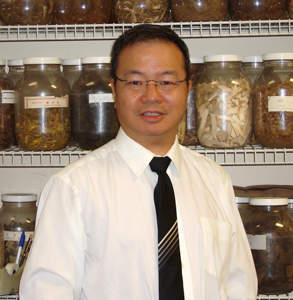
Professor Liao, L.Ac. has served as professor of herbology and acupuncture at the Academy of Chinese Culture & Health Sciences and at Five Branches University. He teaches and practices Taiji, Qi Gong, acupuncture, and herbal medicine. His many years of teaching experience bring the highest quality of courses to HealthCMi.
Prof. Liao has spent decades studying Taoism and the roots of Chinese medicine. For the last two decades, Prof. Liao has taken an annual retreat to China to study with Master Wang Li Ping. He translated the Ling Bao Tong Zhi Neng Nei Gong Shu for Wang Li Ping, which is a guide for meditation in the way of the Taoist Dragon Gate Sect (Long Men Pai). Wang Li Ping is an 18th generation Taoist Master of Long Men Pai. The Ling Bao Tong Zhi Neng Nei Gong Shu includes Taoist secrets of the golden flower and five souls that was delivered by the ancient masters Zhong and Lu. This text includes methods of practice and theory.
Prof. Liao's extensive experience in Taoist theory and meditation practice inform an understanding of the acupuncture points included in this course, according to both ancient and modern Chinese medicine.
Tinnitus Article Continued...
Back to the top of the article >
Zhejiang Traditional Chinese Medicine University
Researchers from Zhejiang Traditional Chinese Medicine University (Zhou et al.) find acupuncture effective for the alleviation of tinnitus due to kidney essence deficiency. [22] A group of patients with tinnitus from kidney jing deficiency were treated with acupuncture for 8 weeks. The results demonstrate that acupuncture produces long-lasting effects.
To confirm clinical efficacy, tinnitus severity was measured using the Tinnitus Handicap Inventory (THI). The THI is a 25-item questionnaire published by Newman et al. (1996). It has a maximum score of 100. The higher the score, the more severe the extent of tinnitus. Patients were evaluated using THI at 3 datapoints: 4 weeks into treatment, at the end of treatment, and 6 months after the end of treatment.
Another questionnaire was used to determine treatment efficacy. The tinnitus severity questionnaire published in 1991 at the 9th Tinnitus Conference in Tokyo classifies tinnitus into 4 tiers of increasing severity as detailed:
- Level 1: Absence of ringing.
- Level 2: Ringing only happens at night or in quiet environment. Work and sleep not affected.
- Level 3: Ringing happens in any environment, but is tolerable. Work and sleep mildly affected.
- Level 4: Ringing happens in any environment and is intolerable. Work and sleep majorly affected.
Based on the above tiers, the treatment efficacy for each patient was categorized into 1 of 4 tiers:
- Clinical recovery: Achieved level 1.
- Significantly effective: Ringing reduced by 2 levels.
- Effective: Ringing reduced by 1 level.
- Ineffective: No reduction in ringing level.
Results
The treatment effective rate for each group was derived with the following formula: [Clinical recovery + Significantly effective + Effective] / [Total number of patients in group] * 100%. The mean THI score before acupuncture was 50.87 ±11.52. Four weeks into treatment, the score fell to 27.63 ±9.05. At the end of the 8 weeks of treatment, patients achieved a mean THI score of 25.49 ±10.27. Compared with the pre-acupuncture scores, the 4-week and 8-week results indicate that acupuncture effectively alleviates tinnitus (P<0.05 for both datapoints).
Six months after the end of treatment, a follow-up recorded that patients scored 30.02 ±7.45 on average for the THI. The post-treatment results did not differ significantly from the three datapoints (P>0.05), highlighting the long-lasting effects of acupuncture. The treatment total effective rate after 8 weeks of treatment was 83.3%, indicating that acupuncture has a high efficacy rate for the attenuation of tinnitus.
Design
The study was set up as a single-arm clinical trial. A total of 72 tinnitus patients from the Acupuncture Division of Zhejiang Chinese Medicine University Affiliated No. 3 Hospital participated in the study. There were 32 males, 40 females, aged between 35–74 years, with a mean age of 54.6 years and had durations of illness between 1 week to 15 years. Diagnoses for tinnitus were made based on both biomedical and Traditional Chinese Medicine (TCM) diagnostic criteria. Biomedical diagnostic criteria for tinnitus were in accordance with the 1st edition of “Practical Otorhinolaryngology” published by People’s Medical Publishing House (1998):
- Main clinical symptoms: Subjective tinnitus, presenting as cricket-like sounds, whistling/ringing, machinery sounds, roaring etc. Occurring in one or both ears. Intermittent or continuous. May be accompanied by hearing loss or dizziness.
- Physical signs: No ear deformities. No inflammation of ear canal. Eardrums functioning well and not damaged. No anomalies detected in nasopharynx. Severe cardiac or nervous system diseases ruled out.
- Clinical examination: Routine audiological tests including acoustic immittance testing and pure tone audiometry. Inner ear and intracranial CT. Inner ear and intracranial MRI.
TCM diagnostic criteria for tinnitus from kidney essence deficiency were in accordance with “Standards of Diagnosis and Therapeutic Effect for Diseases and Patterns in Chinese Medicine” defined by the State Administration of Traditional Chinese Medicine, as well as “Guiding Principles for Clinical Study of New Chinese Medicines” published by the Ministry of Health of China (1993):
- Cricket-like ringing in the ear, gradually increasing in intensity.
- Deafness in severe cases.
- Accompanied by dizziness, lower back pain or soreness, spermatorrhea, thin-taut pulse or thin-weak pulse, red tongue. Alternatively: accompanied by weak limbs, lower back coldness, impotence, premature ejaculation, deep-thin pulse, or pale tongue with thin and white coating.
The following selection criteria were applied in choosing trial participants:
- Fulfilled the above diagnostic criteria comprehensively.
- Between 18 – 80 years of age.
- Main clinical symptom being ringing in ear and ear fullness.
- Constant recurrence of tinnitus for ≥1 month before consultation, or continuous tinnitus for ≥1 week.
- No severe cardiac, neurological, renal, hematopoietic or psychological illnesses.
- Complied with prescribed treatment during study.
- Signed informed consent.
- The following exclusion criteria were applied:
- Pregnant or lactating.
- Severe cardiac, neurological, renal, hematopoietic, or psychological illnesses.
- Conductive or objective tinnitus caused by outer or middle ear conditions.
- Tinnitus due to tumors.
- Complete deafness with tinnitus.
- <18 or >80 years old.
Patients received acupuncture for 8 weeks. A follow-up was conducted 6 months after the end of treatment. The following abdominal acupoints were selected (bilateral where applicable):
- Zhongwan (CV12)
- Xiawan (CV10)
- Qihai (CV6)
- Guanyuan (CV4)
- Shangqu (KD17)
- Yindu (KD19)
The following body acupoints were selected:
- Tinggong – Afflicted side (SI19)
- Tinghui – Afflicted side (GB2)
- Yifeng – Afflicted side (TB17)
- Waiguan – Both sides (TB5)
- Hegu – Both sides (LI4)
- Taixi – Both sides (KD3)
- Taichong – Both sides (LV3)
Size 0.25 mm x 40 mm acupuncture needles were used. Needle insertion depths for abdominal acupoints were based on the Sancai measuring method, which outlines three insertion depths: <1 inch (Tian area), 1 inch (Ren area), and 1.5 inches (Di area). For Guanyuan, Qihai, Zhongwan, and Xiawan, needles were inserted up to a maximum of 1.5 inches. Shangqu was pierced 1 inch, and Yindu was pierced <1 inch.
After insertion, warm needle acupuncture with moxibustion was applied to Qihai and Guanyuan. Standard acupuncture protocols were followed for body acupoints. Once all needles were inserted and warmed (Qihai and Guanyuan), a 30-minute retention time was observed. One session was administered, three times per week. Two treatment cycles were administered and four weeks comprised one cycle. The 83.3% total effective rate demonstrates that this protocol is effective for the alleviation of tinnitus.
Dongzhimen Hospital
Dongzhimen Hospital researchers (Fang et al.) from a division of Beijing University of Chinese Medicine conclude that electroacupuncture is effective for the treatment of tinnitus due to liver-gallbladder heat. [23] In addition, electroacupuncture outperformed manual acupuncture.
Two groups of patients were compared in an 8-week clinical trial. One group received conventional manual acupuncture and the other received electroacupuncture. The results demonstrate that patients achieved a greater reduction in ringing with electroacupuncture than with conventional acupuncture.
Referring to the clinical efficacy evaluation guidelines set by Liu Peng, treatment efficacy was evaluated. [24] Tinnitus severity was classified into levels based on symptom presentation. The higher the severity, the higher the level. Based on the improvement in tinnitus levels before and after treatment, the treatment efficacy for each patient was categorized into 1 of 4 tiers:
- Clinical recovery: Absence of ringing.
- Significantly effective: Tinnitus severity decreased by ≥ 2 levels.
- Effective: Tinnitus severity decreased by 1 level.
- Ineffective: No reduction in tinnitus severity.
Calculation
The overall treatment effective rate for each group was derived with the following formula: [Clinical recovery + Significantly effective + Effective] / [Total number of patients in group] * 100%. The treatment significantly effective rate for each group was derived with the following formula: [Clinical recovery + Significantly effective] / [Total number of patients in group] * 100%.
Results
Electroacupuncture resulted in a significantly higher overall treatment effective rate than manual acupuncture (P<0.05). The electroacupuncture group had an 89.3% overall treatment effective rate and the manual acupuncture group had an 81.4% rate. Further, there were other differences, especially in the treatment significantly effective rate (P<0.01). The electroacupuncture group had a 78.6% treatment significantly effective rate, while the conventional acupuncture group had a 29.6% rate. The above results show that not only did more patients benefit from electroacupuncture than manual acupuncture, but each patient also benefitted to a greater extent. This suggests that electroacupuncture is a stronger treatment option for tinnitus, among the many types of acupuncture methods available.
Design
The study was set up as a double-arm clinical trial. A total of 60 patients from the Acupuncture Division of Dongzhimen Hospital at Beijing University of Chinese Medicine participated in the study. They were diagnosed with tinnitus from excessive liver-gallbladder heat between September 2014 and August 2016. Diagnoses for tinnitus were made based on both biomedical and TCM diagnostic criteria. Biomedical diagnostic criteria for tinnitus were in accordance with “TCM Otorhinolaryngology”: [25]
- Subjective tinnitus in one or both ears, single or composite sound, intermittent or continuous.
- Sensorineural tinnitus confirmed by audiological tests.
TCM diagnostic criteria for tinnitus from excessive liver-gallbladder heat were in accordance with “Guiding Principles for Clinical Study of New Chinese Medicines”: [26]
- Abrupt onset of tinnitus.
- Short duration of illness.
- Whooshing or roaring sounds perceived.
- Ringing often worsens due to depression or anger.
- Accompanied by rosy complexion, red eyes, bitter taste in mouth, thirst, constipation, yellow urine, red tongue with yellow coating, rapid-taut strong pulse.
- The following selection criteria were applied in choosing trial participants:
- Fulfilled above diagnostic criteria (both western and TCM).
- Did not receive vasodilative drugs, Chinese herbs, or other treatment for tinnitus in the month before the study.
- Signed informed consent.
The following exclusion criteria were applied:
- Underwent other forms of therapy that might influence treatment results, during the study.
- Severe primary cardiac, neurological, renal and hematopoietic diseases.
- Severe psychological illnesses.
- Not receptive to acupuncture or electroacupuncture.
Participating patients were randomly allocated to either the electroacupuncture group or the manual acupuncture group. To ensure a fair comparison, the gender, age, and duration of illness were equivalent for both groups (P>0.05). Excluding patients who were disqualified during the study, the acupuncture group recorded 27 patients, 15 males, 12 females, between 27 to 63 years, mean age 48.89 ±10.22 years, duration of illness between 0.5 – 48 months, mean duration of illness 9.45 ±11.8 months. The electroacupuncture group recorded 28 patients, 12 males, 16 females, between 30 to 63 years, mean age 49.96 ±8.34 years, duration of illness between 0.67 – 44 months, mean duration of illness 9.67 ±9.83 months.
The acupuncture group received conventional manual acupuncture and the electroacupuncture group received standard electroacupuncture. Identical acupoints were selected for both groups. Both groups received treatment for 8 weeks. The following primary acupoints were selected (both sides for tinnitus in both ears, afflicted side for tinnitus in one ear):
- Ermen (TB21)
- Tinggong (SI19)
- Tinghui (GB2)
- Fengchi (GB20)
- Gongxue (1.5 inches vertically downwards from Fengchi, aligned with the lower lip)
The following secondary acupoints were selected:
- Taichong (LV3)
- Xingjian (LV2)
Acupuncture Protocol
Size 0.25 mm x 40 mm disposable sterile acupuncture needles and 75% alcohol disinfectant were used. Patients were instructed to open their mouth slightly when inserting Ermen, Tinggong, and Tinghui. These three acupoints were needled to a depth of approximately 1.2 – 1.5 cun, until the patient felt a needle sensation diffusing toward the base of the ear or around the ear.
For Fengchi, the needle was inserted approximately 0.8 – 1.0 inches, oriented diagonally towards the direction of the nose tip, until soreness or fullness was felt in the acupoint. For Gongxue, the needle was inserted 0.8 – 1.0 inches deep, towards the direction of the opposite lip, until soreness or fullness was felt in the acupoint. Standard conventional acupuncture protocol was observed for Taichong and Xingjian, and needles were manipulated with the lift-thrust-rotation attenuation technique.
One 20-minute acupuncture session was administered per day, 2 times per week. A total of 2 treatment cycles were administered and 4 weeks comprised one treatment cycle.
For electroacupuncture, a pulse electroacupuncture device (Model: G6805-1A, Shanghai Huayi Medical Supplies Co., Ltd.) was used. After needles were inserted, the electroacupuncture device was connected to two pairs of acupoints, the first being Ermen and Tinghui, and the second being Fengchi and Gongxue. For each pair, the positive electrode was attached to the upper acupoint while the negative electrode was attached to the lower acupoint. Disperse-dense waves were applied. The intensity was adjusted for each patient within tolerance levels and the needles were slightly pulsing.
The electroacupuncture group had a 78.6% treatment significantly effective rate and the manual acupuncture group had a 29.6% rate. This demonstrates that electroacupuncture is an important treatment modality for patients with tinnitus.
Back to beginning of the article >
Herbal Medicine
Chinese medicinal herbs have been used for the treatment of tinnitus for well over 1,000 years. The following looks at a product that incorporates Chinese medicinal herbs into their formulation. Researchers at the Department of Otolaryngology at the Health Science Center in Brooklyn (New York), along with their colleagues at the The State University of New York (SUNY) Downstate Medical Center and the Martha Entenmann Tinnitus Research Center, conducted a prospective study to test the efficacy of Clear Tinnitus® for the relief of middle-ear pressure in patients with severe, disabling type tinnitus. Of the 11 patients that completed the study, 7 patients reported relief of their symptoms and 4 did not respond. While more extensive research is necessary with a larger sample size for this type of investigation, these outcomes indicate that additional research is warranted.
Tinnitus, named by the Latin term for “ringing”, is the perception of sound when there is no external sound present. [27] Despite its name, there are a range of sounds associated with tinnitus: roaring, clicking, hissing, buzzing, and, of course, ringing. The quality of sound may range from very loud to very soft, of high or low pitch, and it may be perceived unilaterally or bilaterally. In the past year, approximately 25 million people in the USA have experienced tinnitus lasting at least 5 minutes. [28] However, tinnitus may be intractable and may persist for decades.
For some patients, the sounds associated with tinnitus are a mere annoyance, periodically interrupting their routines. For others, however, the sound is constant, and its severity such that it is difficult to hear external stimuli, let alone concentrate or sleep. This may cause problems with memory and fatigue, provoking emotional anguish, anxiety, and depression. Tinnitus is often the first sign of hearing loss among the aging, but it can also affect the young and otherwise healthy individuals. Repeated exposure to loud noises, as experienced by many manual laborers and musicians, can damage the delicate sensory hair cells in the inner ear. [29] “Noise-induced hearing loss (NIHL) is the second most common acquired hearing loss following presbycusis [age-related hearing loss], and is known as an occupational disorder long ago. It was estimated in 1981 that about 9 million workers in the US are exposed to hazardous levels of noise in the workplace.” [30] Tinnitus is also common among veterans who have been exposed to repeated bomb blasts, which damage the areas of the brain that process sound; it is one of the most common service-related disabilities of those returning from the wars in Iraq and Afghanistan. [31]
Tinnitus is broadly grouped into two categories: subjective and objective. Far more common, subjective tinnitus is most likely caused by abnormal neuronal activity, resulting from a disruption or alteration in the input from the auditory pathway to the brain. Sound is received as vibrations in the cochlea, part of the inner ear, within which tiny hairs pick up the vibrations and transmit them as nerve impulses to the brain. Tinnitus associated with conductive hearing loss—caused by ear infections, wax impaction, or a dysfunction of the eustachian tube (which aerates the middle ear and removes debris)—is also considered subjective, because the sound input to the central auditory system is altered. “Loud noise, aging, Meniere’s disease, and drugs are the most common causes of subjective tinnitus”; common pharmaceuticals such as some antibiotics and antidepressants, water pills (diuretics), and aspirin may cause or exacerbate tinnitus symptoms. [32]
Some patients with tinnitus also experience hyperacusis, a discomfort associated with loud noises. Rarely, it is possible for the practitioner to use amplification tools such as a stethoscope to hear the phantom sound; these cases are considered objective tinnitus. Generally, this is caused by turbulent blood flow in the major vessels to the head, as is prevalent in atherosclerosis and conditions characterized by increased vascularization, such as tumors. Spasms of the muscles serving the palate and middle ear may also result in a perceptible noise, primarily a rhythmic clicking.
In Traditional Chinese Medicine (TCM), tinnitus is categorized by its etiology according to differential diagnostics. “Most recently, tinnitus has been divided into five types at the Third Chinese Zhong Xi Yi Je He Otolaryngology Society Annual Meeting in 2002: Wai Gan Fen Re Xing (related to respiratory infection), Gan Hou Shang Rao Xing (related to abnormal liver function), Tan Re You Jie Xing (related to the ‘hot’ state in TCM), Shen Jing Kui Xu Xing (related to kidney dysfunction) and Pi Xi Xu Ruo Xing (related to abnormal spleen function).” Of these, two can be considered conditions of excess—respiratory infection and heat—and three are associated with deficiencies—of the liver, kidney, or spleen.
A respiratory infection is described by TCM as pathogenic wind attacking the exterior, and is treated by releasing the exterior. Heat conditions associated with tinnitus belong to the liver and gallbladder channels; extreme heat stirs up wind and flames upwards to harass the upper reaches of the channels. To relieve these symptoms, an acupuncturist clears the heat and pacifies the resultant wind. Liver yin deficiency has different symptoms but the same effect: deficient liver yin leads to a preponderance of liver yang (heat), which the relatively deficient yin fails to anchor, so the liver yang, or heat, rises upwards. In these cases, it is necessary to clear the deficient heat while simultaneously nourishing liver yin, the underlying cause of the deficiency.
Kidney deficiency may produce tinnitus in two ways. Kidney yin deficiency leads to deficient heat rising, and the treatment also requires clearing heat while nourishing the yin of the kidneys. Alternatively, a hypofunction of the kidney denies essential qi the energy necessary to ascend and fill the orifices; in such cases, it is necessary to nourish the kidney essence. While traditional texts do not include the spleen as an etiological factor in the development of tinnitus, spleen deficiency causes phlegm-damp accumulation in the body, which is a factor in the pathogenesis of both atherosclerosis and tumors; thus, this type is most likely associated with the audible sounds of objective tinnitus.
Summary
The aforementioned research indicates that acupuncture and herbal medicine are effective modalities for the alleviation of tinnitus. An intractable disorder, the treatment of tinnitus has long been a challenge for all medical practitioners, including licensed acupuncturists. The research demonstrates important protocols that may bring significant relief to patients with tinnitus. Patients with tinnitus are encouraged to consult with their local licensed acupuncturists to discuss treatment options.
References
1 Song SX, Wang CY, Yin CP. Randomized comparative research on Yishenrougantongluotang brew in treating nervous tinnitus J. Practical TCM Internal Medicine Journal, 2013, 27(3): 45-47.
2 Wang SJ. Clinical observation of integrative medicine in treating nervous tinnitus J. Hubei TCM University Journal, 2014, 16(2): 90-92.
3 Qu R, Gao SL. Clinical findings on TCM and western integrative medicine in treating nervous tinnitus J. Chinese TCM Journal, 2007, 10: 70-71.
4 Hong YL, Xu HB, Huang CL. Clinical analysis of postauricular closed treatment with lidocaine in treating nervous tinnitus J. Journal of Otolaryngology and Ophthalmology of Shandong University, 2011, 25(6): 30-32.
5 Kong WJ. Diagnosis and treatment of tinnitus (1) J. Journal of Clinical Otorhinolaryngology Head and Neck Surgery, 2010, 24(1): 35-40.
6 Zhang SY. Observation of effect of abdominal acupuncture in treating nervous tinnitus 118 cases J. Chinese Journal of Traditional Medical Science and Technology, 2010, 17(3): F004.
7 Chi Q. Exploration of treatment methods of nervous deafness and tinnitus J. Chinese Journal of Clinical Rational Drug Use, 2013, 6(4): 11-12.
8 Cheng Y, Zhao RX, Zhu XC. Clinical research on acupuncture in treating nervous tinnitus J. Journal of Zhejiang University of Traditional Chinese Medicine, 2008, 32(1): 135-136.
9 Wang JX, Liang JW. Qinggantongqiao method in treating tinnitus and deafness 86 cases J. Yunnan Journal of Traditional Chinese Medicine and Materia Medica, 2010, 31(6): 26.
10 Li XQ, Wang X. Immediate blood pressure lowering effect of acupuncture on Taichong acupoint in treating hypertension from rising liver-yang 65 cases J. Journal of Traditional Chinese Medicine, 2008, 49(7): 622-624.
11 Gao WB. Acupuncture Six Jue: Modern acupuncture for neurological diseases M. Beijing: China Press of Traditional Chinese Medicine, 2007: 269.
12 Chen G. Clinical Observation on Acupuncture Combined with Chinese Medicine in Treating Tinnitus of Live-fire Flaring-up Pattern J. 2016, 11(5): 888-890.
13 Wen Q. Clinical observation of acupuncture and herbs in treating tinnitus from kidney deficiency D. Harbin: Heilongjiang TCM University, 2012.
14 Liu LH, Qiu XX, Liu PN. Psychological intervention for anxiety and depression from Parkinson’s disease J. Nursing Practice and Research, 2012, 14(9): 136-137.
15 Xie Q, Ren YY, Li WG, et al. Observation the Curative Effects of the Acupuncture and Moxibustion Treatment of Transfer Focus of Excitation on Nervous Tinnitus J. Practical Clinical Journal of Integrated Traditional Chinese and Western Medicine, 2009, 9(3): 15-17.
16 Wang X. Clinical observation of acupoint thread-embedding in treating nervous tinnitus J. Zhejiang TCM University Journal, 2011, 35(4): 589-590.
17 Liu B. Clinical thinking of tinnitus clinical symptoms and differential diagnoses J. Journal of Clinical Otolaryngology Head and Neck Surgery, 2015, 22(8): 688-690.
18 Yang ZM. Acupuncture as tinnitus treatment J. Baotou Medical College Journal, 2009, 25(1): 92.
19 Yang ZM. Acupuncture as tinnitus treatment J. Baotou Medical College Journal, 2009, 25(1): 92.
20 Zheng WL. Head acupuncture vertigo and hearing area prolonged needle retention with body acupuncture in treating nervous tinnitus 60 cases J. Clinical Journal of Chinese Medicine, 2011, 3(1): 28-29.
21 Liu P. Discussion of tinnitus severity grading and clinical evaluation standards J. Chinese Journal of Otorhinolaryngology in Integrative Medicine, 2004, 12(4): 181-183.
22 Zhou CL, Gao H, Fang JQ, et al. Curative Effective Observation of Adopting Abdominal Acupuncture as the Main Therapy in Treating Nervous Tinnitus with Syndrome of Deficiency of Kidney Essence: A Report of 72 Cases J. Journal of New Chinese Medicine, 2017, 49(6): 121-123.
23 Fang X, Su BY, Li MM, et al. The Clinical Therapeutic Observation of Deep Needling Ermen(SJ 21 Tinghui(GB 2) Combine with Electroacupuncture for Hepatobiliary Fire Type Tinnitus J. Journal of Zhejiang University of Traditional Chinese Medicine, 2017, 41(6): 542-544.
24 Liu P. Discussion on tinnitus severity grading and efficacy evaluation guidelines J. Chinese Journal of Otorhinolaryngology in Integrative Medicine, 2004, 12(4): 181-183.
25 Wang SZ. TCM Otorhinolaryngology M. Beijing: China Press of Traditional Chinese Medicine, 2003: 82-89.
26 Zheng XY: Guiding Principles for Clinical Study of New Chinese Medicines S. Beijing: China Medical Science Press, 1993: 314-315.
27 Fornaro, Michele, and Matteo Martino. "Tinnitus psychopharmacology: A comprehensive review of its pathomechanisms and management." Neuropsychiatric Disease and Treatment, 2010, 209.
28 nidcd.nih.gov/health/tinnitus
29 Ibid.
30 Mehrparvar, Amir Houshang, Seyyed Jalil Mirmohammadi, Mohammad Hossein Davari, Mehrdad Mostaghaci, Abolfazl Mollasadeghi, Maryam Bahaloo, and Seyyed Hesam Hashemi. "Conventional Audiometry, Extended High-Frequency Audiometry, and DPOAE for Early Diagnosis of NIHL." Iranian Red Crescent Medical Journal 16, no. 1 (2014). Pg 1.
31 nidcd.nih.gov/health/tinnitus
32 merckmanuals.com/professional/ear,-nose,-and-throat-disorders/approach-to-the-patient-with-ear-problems/tinnitus
33 Goldstein, Barbara, Abraham Shulman, and Matthew J. Avitable. "Clear Tinnitus ® , Middle-Ear Pressure, and Tinnitus Relief: A Prospective Trial." International Tinnitus Journal 13, no. 1 (2007). pg 29.
34 Ibid, pg 31.
35 Ibid, pg 31.
36 Ibid, pg 29.
37 Goldstein, et al, Clear Tinnitus ® , Middle-Ear Pressure, and Tinnitus Relief: A Prospective Trial, pgs 30-31.
38 Ibid, pg 33.
39 Ibid.
40 Ibid, pgs 34-35.
41 Ibid, pg 35.
42 Ibid, pg 33.
Cirrhosis of the Liver
Online Course Samples
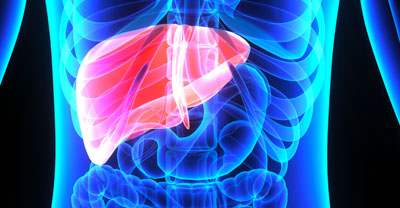
Biomedicine
Definition
Cirrhosis of the liver is a disease characterized by increases in connective tissue and pathological changes in the gross and microscopic makeup of the liver. Cirrhosis of the liver tends to be a slow and progressive illness wherein healthy liver tissue is replaced with scar tissue. During the onset of the disease, the liver may enlarge (hepatomegaly). Long-term liver size may be larger or smaller and there may be abnormal enlargement of the spleen (splenomegaly).
Cirrhosis is a condition in which the liver slowly deteriorates and is unable to function normally due to chronic or long lasting injury. Scar tissue replaces healthy liver tissue and partially blocks the flow of blood through the liver. The liver can regenerate most of its own cells when they become damaged. However, if injury to the liver is too severe or long lasting, regeneration is incomplete, and the liver creates scar tissue. Scarring of the liver, also called fibrosis, may lead to cirrhosis.
Liver Function
The liver plays an important role in metabolism—the way cells change food into energy after food is digested and absorbed into the blood. The liver has many functions, including:
- taking up, storing, and processing nutrients from food—including fat, sugar, and protein—and delivering them to the rest of the body when needed
- making new proteins, such as clotting factors and immune factors
- producing bile, which helps the body absorb fats, cholesterol, and fat-soluble vitamins
- removing waste products the kidneys cannot remove, such as fats, cholesterol, toxins, and medications
The buildup of scar tissue that causes cirrhosis is usually a slow and gradual process. In the early stages of cirrhosis, the liver continues to function. However, as cirrhosis gets worse and scar tissue replaces more healthy tissue, the liver will begin to fail. Chronic liver failure, which is also called end-stage liver disease, progresses over months, years, or even decades. With end-stage liver disease, the liver can no longer perform important functions or effectively replace damaged cells.
Common Signs and Symptoms
• fatigue
• abdominal pain (especially upper right abdominal pain)
• abdominal distention
• jaundice
• ascites (abdominal fluid accumulation)
• nausea…
More in Course Materials…
Chinese Medicine Theory
In Traditional Chinese Medicine (TCM), cirrhosis of the liver presents with several differential diagnostics including:
- Damp-heat
- Liver qi stagnation
- Blood stasis
- Dirty Water Accumulation
- Heat in the Blood
- Blood deficiency
- Spleen and stomach qi deficiency
- Spleen and kidney yang deficiency
- Liver and kidney yin deficiency
Chinese Medicine Etiology
Cirrhosis of the liver often starts as an excess condition that creates long-term deficiencies. For example, viral hepatitis or excess alcohol intake may lead to damp-heat in the liver and spleen. This causes qi and blood stasis plus dirty water accumulation, which congeals into palpable masses. In addition, damp-heat and its sequelae damages the liver and kidney yin and also the spleen and kidney yang. As a result, there is a…
More in Course Materials…
Liver and Gallbladder Modifications
The following are formula modifications of Xue Fu Zhu Yu Tang and Si Ni San for cirrhosis of the liver or gallstones determined by the following differential diagnostic patterns:
- Blood Stasis with Heat in the Blood
- Qi and Blood Stasis with Damp-Heat
- Qi and Blood Stasis and Spleen Qi Deficiency with Dampness
Following this presentation of differential diagnostic combination patterns, a look at specific case studies elucidates treatment strategies for treating cirrhosis of the liver and gallstones.
1. Blood Stasis with Heat in the Blood
This formula modification is for the buildup of masses due to qi and blood stasis in the liver. This formula is also appropriate for the treatment of gallstones. Note the strong blood invigorating herbs in this formula. This formula is contraindicated during pregnancy as are similar formulas containing strong blood invigorating herbs.
Chi Shao Radix Paeoniae Rubrae 2 – 12 g
Dang Gui Radix Angelicae Sinensis 3 – 12 g
Chuan Xiong Radix Ligustici Chuanxiong 3 – 9 g
All the herbs above promote blood circulation. The herbs can be differentiated as follows: Chi Shao cools heat in the blood. Dang Gui nourishes the blood. Chuan Xiong moves the qi in the blood and tends to flow to the body’s surface and upper body. This means that Chuan Xiong has a rapid onset of therapeutic actions and benefits the upper jiao (burner).
Hong Hua Flos Carthami Tinctorii 3 – 9 g
Tao Ren Semen Persicae 3 – 12 g
Hong Hua and Tao Ren both break up congealed blood. Hong Hua’s onset of action is faster and stronger. Tao Ren’s action is sustained for a longer period of time and it is able to moisten dryness.
Niu Xi Radix Achyranthis Bidentatae 3 – 12 g
Niu Xi promotes blood circulation to the legs. It strengthens the liver and kidneys. It also expels wind-dampness to alleviate bi (joint) pain.
Mu Dan Pi Cortex Moutan Radicis 9 – 15 g
Di Gu Pi Cortex Lycii Radicis 12 g
Bai Wei Radix Cynanchi Baiwei 15 g
All of the above herbs cool heat in the blood. Mu Dan Pi promotes blood circulation. Di Gu Pi clears steaming bone syndrome and Bai Wei eliminates heat.
Sheng Di Huang Radix Rehmanniae Glutinosae 3 – 15 g
Sheng Di Huang cools blood heat, nourishes the blood, and moderates the function of the stronger blood-regulating herbs. It is difficult to digest.
Bai Shao Paeoniae Radix Alba 12 g
Chai Hu Radix Bupleuri 3 – 6 g
Zhi Ke Fructus Citri Aurantii 3 – 12 g
Jie Geng Radix Platycodi Grandiflori 3 – 15 g
All the above herbs regulate qi. Chai Hu regulates liver qi and promotes its flow upward through the body. Bai Shao stables the liver yang and nourishes the liver yin. Zhi Ke opens the chest and moves the qi. Jie Geng regulates lung qi and opens the lungs. It also guides the other herbs to the upper body.
Jin Qian Cao Lysimachiae Herba 15 – 30 g
Xiang Fu Rhizome Cayperi Rotunda 9 – 12 g
Jin Qian Cao and Xiang Fu help discharge gallstones. Jin Qian Cao promotes urination and clears damp-heat. Xiang Fu promotes blood circulation and stops pain.
E Zhu Rhizoma Curcumae Ezhu 9 – 15 g
San Leng Rhizoma Sparganii Stoloniferi 9 – 15 g
E Zhu and San Leng both break up masses caused by congealed blood due to stasis. E Zhu’s action is stable and sustained longer. San Leng has a faster onset of effective actions and breaks up qi stagnation affecting blood.
Zhi Gan Cao Radix Glycyrrhizae Uralensis 3 g
Zhi Gan Cao harmonizes the other herbs in the formula. Zhi Gan Cao is the honey-fried preparation of the herb.
2. Qi and Blood Stasis with Damp-Heat
This modification treats cirrhosis with jaundice or concomitant chronic hepatitis. The addition of Yi Chen Hao, Huang Qin…
More in Course Materials...
Case Studies
1. Cirrhosis with Hepatitis B
A male, age 33, was diagnosed with chronic hepatitis B and cirrhosis of the liver. Total duration of illness to date: five years. His ALT (liver enzyme) was 140 and he had pain in his liver. His liver had enlarged 2 cm under his rib. He had a poor appetite, belching, and a bloated abdomen. He had red and purple spider angiomas on his chest and neck, which indicated his blood circulation was impaired from the cirrhosis of the liver. His tongue was purple and his pulse was wiry and full.
- Inflamed or injured liver cells leach elevated quantities of substances, including liver enzymes, from within cells to the bloodstream. Normally, these substances are contained within cells. The leakage into the bloodstream from cells results in elevated levels of liver enzymes in blood tests. Typically, this includes the enzymes Alanine transaminase (ALT) and Aspartate transaminase (AST).
- Hepatomegaly, swelling of the liver beyond its normal size, is caused by many conditions including primary biliary cirrhosis and hepatitis A, B, and C. Hepatomegaly may also result from alcohol abuse, cancer, leukemia, steatosis of the liver (fatty liver), Reye syndrome, congestive heart failure, and glycogen storage related diseases.
- Normal ALT levels are approximately 10 – 40 units per liter (U/L) for males and 7 – 56 U/L for females.
- 90% of infants exposed to hepatitis B virus (HBsAg) develop chronic hepatitis B infections
- Up to 50% of children between the ages of 1 – 5 years develop chronic hepatitis B infections
- 5 - 10% of infected adults develop chronic hepatitis B infections
- A blood test is used for a definitive diagnosis of hepatitis B
Diagnosis
Qi and blood stasis in the liver, food stagnation
Treatment Strategy
Promote and regulate qi and blood circulation in liver
Base Formula
Xue Fu Zhu Yu Tang modified with Bao He Wan
This modification of Xue Fu Zhu Yu Tang addresses food stagnation and its effects on digestion.
Chi Shao Radix Paeoniae Rubrae 12 g
Chuan Xiong Radix Ligustici Chuanxiong 9 g
Chi Shao and Chuan Xiong promote blood circulation. The herbs can be differentiated as follows: Chi Shao cools heat in the blood. Chuan Xiong moves the qi in the blood and tends to flow to the body’s surface and upper body.
Hong Hua Flos Carthami Tinctorii 9 g
Tao Ren Semen Persicae 12 g
Hong Hua and Tao Ren both break up congealed blood. Hong Hua’s action is faster and stronger. Tao Ren’s action is sustained for a longer period of time and it is able to moisten dryness. This paired set of herbs is a classic combination. As in many classic paired herbs…
More in Course Materials…
TCM Dietetics
Now, we’ll take a look at traditional Chinese medicine dietetics as it relates to the liver. At the Healthcare Medicine Institute, we offer many courses on Chinese medicine dietetics. Let’s take a brief look at some of the traditional approaches to healthy eating that affect the liver and benefit patients with cirrhosis:
Huangdi Neijing Suwen
According to the Huangdi Neijing (The Yellow Emperor’s Inner Classic), five element theory specifies that several flavors are contraindicated for specific differential diagnoses per the control cycle. If the liver is deficient, avoid spicy foods. If the lungs are weak, avoid bitter foods. If the spleen and stomach are weak, avoid sour foods. If the heart is sick, avoid salty foods. If the kidneys are deficient, avoid sweet foods. Following these guidelines prevents…
More in Course Materials…
Ethics In Acupuncture #2
Sample of Online Course Materials
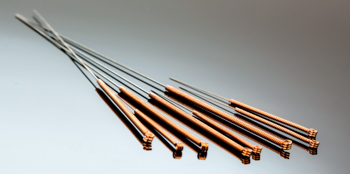
This course presents an overview of medical ethics and then examines ethical and legal patient privacy considerations. Topics include:
- Sign-In Sheets
- Consent
- Maintenance of Records
- Disposal of Medical Records
- Marketing & Media Coverage
- Legal Authorization For Release
- Sharing Patient Information
- Workers Compensation
- Disability, Abuse, and Neglect Exemption
- Confidential Conversations & Answering Machines
- Collection of Payment
Medical Ethics
Ethics are moral principles that act as guidelines for behavior. They act as a guiding philosophy, impart moral importance and help discern right from wrong. Although ethics correlate to legality, ethical obligations are often greater than what is legally required. Conversely, simply because something is legal does not necessarily make it ethical. The following is an . . .
More in course materials . . .
Access To Care, AMA Code of Ethics
Access to care involves issues of transportation, disability, knowledge, referral, and finance. Item #9 reads, “A physician shall support access to medical care for all people.” This item raises many questions:
• Who or what entity pays for medical care?
• What types of medical care are covered by insurance and government programs?
• When is a referral to another type of health care provider appropriate?
• What limits are placed on access to medical care?
• Who or what entity is responsible for providing or ensuring . . .
More in course materials . . .
NCCAOM Code of Ethics
The NCCAOM has a code of ethics for all diplomates:
- Respect the rights, privacy and dignity of my patients and maintain confidentiality and professional boundaries at all times.
- Treat within my lawful scope of my practice and training and only if I am able to safely, competently and effectively do so.
- Allow my patients to . . .
More in course materials . . .
Health Insurance Portability and Accountability Act (HIPAA)
The Health Insurance Portability and Accountability Act of 1996 (HIPAA), Public Law 104-191, sets national standards for healthcare related electronic health care transactions and code sets, unique health identifiers, and security. Patient records and information of licensed acupuncturists . . .
More in course materials . . .
Disposal of Medical Records
If using an external company to shred your patient PHI, ensure that they are HIPAA compliant. Often, shredding companies are certified by the . . .
More in course materials . . .
Marketing
Licensed acupuncturists do not have the ability to share patient information with marketing companies without prior authorization. HHS notes:
When is an authorization required from the patient before a provider or health plan engages in marketing to that individual?
Answer:
The HIPAA Privacy Rule expressly requires an authorization for uses or disclosures of protected health information for ALL marketing communications, except in two circumstances:
- When the communication occurs in a face-to-face encounter between the covered entity and the individual; or the communication involves a promotional gift of nominal value.
- If the marketing communication involves direct or indirect remuneration to the covered entity from a third party, the authorization must state that such remuneration is involved.
As a result, hiring a third party to send information directly to patients such as brochures, pamphlets, and coupons without prior patient authorization is a violation of the privacy rules.
More in course materials . . .
Media Coverage
HIPAA protections apply to using media coverage. The press may want to do a highlight of your practice. Be sure to obtain authorizations from the patients involved in . . .
More in course materials . . .
Legal Authorization For Release
Acupuncturists are advised to seek legal counsel to obtain the appropriate authorization paperwork for purposes of marketing and media coverage. The same applies to information about patients supplied to research projects. In addition, it is advisable to consult with your comprehensive liability insurance carrier (malpractice insurance company) to ensure compliance. It may seem harmless to interview a patient about the benefits of acupuncture and to post it on Youtube or a website. However, prior authorization is necessary. Care must be used when engaging in community outreach, advertising, and social media. Although informal verbal consent from a patient may seem ethical, it is not the required legal protection required by HIPAA. The following is an example of what a simple release form may look like . . .
More in course materials . . .
Answering Machines
The general idea is to keep it simple and short when leaving messages on an answering machine. Confirming an appointment time is permissible, but limit the inclusion of. . .
More in course materials . . .
Collection of Payment
Acupuncturists can disclose PHI for purposes of collecting a bill. Use reasonable restrictions to protect information. HHS notes . . .
More in course materials . . .
Acupuncture For Migraines, Insomnia, and Pain
Audio Course Sample
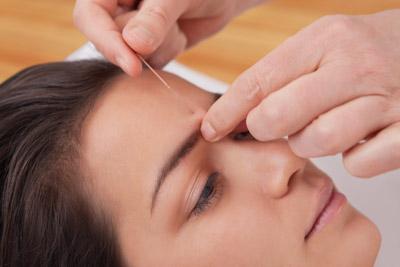
The course is presented as a listening experience. This allows for a relaxing learning environment whether traveling or at home. Below is a sample of the course material. After making a purchase, the course may be downloaded as an MP3 for use on your computer, phone, or other device on several formats. The course may also be played on the website as in the example below. Additionally, the podcast option allows for easy access for iTunes users. The various download and audio player options ensure access on any listening device.
Website Player Samples (course materials include additional download and podcast options):
Sample 1:
Sample 2:
Optional Reading Material Included
Supplementary reading material links are provided in the online course download. This provides a quick way to review the audio course, including acupuncture point prescriptions and references to research. Below are a few examples of reading materials included in the course links section:
Sample 1:
A Stanford University study finds acupuncture effective for reducing the need for sedative medications for neonates and infants undergoing treatments in the intensive care unit. Dr. Golianu, MD (Department of Anesthesiology, Stanford University), Christina Almgren, PNP (Stanford Children’s Health, Stanford University), et. al., note that high doses of opioids and benzodiazepines are often required for neonates and infants for the purposes of pain management and sedation. Cessation from medications lead to withdrawal symptoms and irritability. The researchers cite acupuncture’s documented ability to reduce pain, irritability and withdrawal symptoms... (more in course materials)
Sample 2:
Acupuncture reduces lower back pain and disc degeneration. A new study demonstrates that electroacupuncture applied to specific acupuncture points on the back stimulates beneficial biochemical bodily responses that benefit the spine. Researchers successfully measured scientifically repeatable chemical responses to acupuncture that suppress intervertebral disc degeneration. 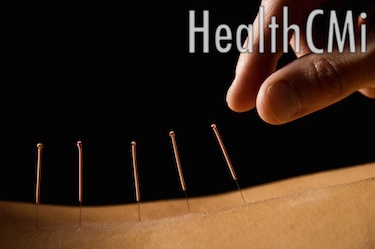
The controlled acupuncture continuing education study compared true acupuncture with sham acupuncture to ensure that placebo responses to treatment were eliminated as variables. The laboratory experiment examined the effects of electroacupuncture at Jiaji (EX-B 2) points on the axially compressed lumbar discs of L4 and L5. Acupuncture was applied for a total of 20 minutes, once per day, for a total of 28 days. Electroacupuncture was administered at 2 - 15 Hz at 1 -2 mA bilaterally.
Compression of the lumbar discs induces pain, inflammation and disc degeneration. Two important chemical processes are involved in the body’s response to compression. Pain and degeneration of the spine are created, in part, by an inflammatory cascade of two proteins in the lumbar discs: increased matrix metalloproteinase-13 (MMP-13), decreased tissue inhibitor of metalloproteinase-1 (TIMP-1) proteins. The sham acupuncture group did not influence protein expression. However, the true Jiaji (Huatoujiaji) acupuncture group successfully reduced MMP-13 and upregulated TIMP-1 levels. The changes were clinically significant and the researchers note that increases in TIMP-1 are “remarkably higher” when electroacupuncture is... (more in course materials)
Sample 3:
Magnetic resonance imaging (MRI) reveals that acupuncture prevents and relieves migraines by restoring normal brain functions. MRI results demonstrate that acupuncture decreases the frequency and duration of migraine attacks by increasing functional connectivity in the brain’s frontal and temporal lobes. 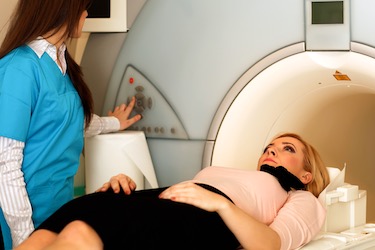 The researchers add that the MRI data reveals the “neural mechanisms of acupuncture treatment for migraine.”
The researchers add that the MRI data reveals the “neural mechanisms of acupuncture treatment for migraine.”
Brain regions of the frontal and temporal lobes have “decreased functional connectivity” in migraine sufferers. The MRI results demonstrate that acupuncture restores functional connectivity in the affected regions. After a four week course of acupuncture treatment, migraine sufferers “showed significantly increased functional connectivity in the bilateral superior frontal gyrus, medial frontal gyrus, precuneus, inferior parietal lobule, posterior cingulate cortex, cingulate gyrus, superior temporal gyrus, middle temporal gyrus, and supramarginal gyrus as compared with before acupuncture treatment.” In addition, the researchers conclude that acupuncture decreases the frequency and duration of migraine attacks after a four week course of acupuncture therapy.
The researchers note that a large body of clinical research concludes that “acupuncture is able to alleviate headache degree and/or improve the quality of life and it is safe and at least as effective, if not more effective than prophylactic drug treatment.” (more in course materials)
Sample 4:
MRI studies reveal the neurological mechanisms of acupuncture on human health. Research published in Autonomic Neuroscience demonstrates that stimulation of specific acupuncture points induces hemodynamic changes in specific brain networks. The researchers add that brain networks accessed by specific acupuncture points relate to specific medical disorders and suggest an “acupoint-brain-organ” pathway. 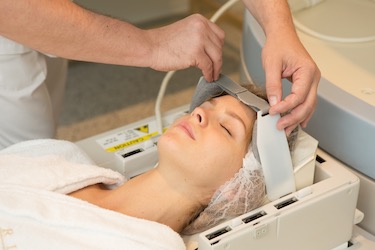
Functional magnetic resonance imaging (fMRI) studies reveal specific acupuncture point effects in the brain through blood-oxygen-level dependent (BOLD) measurements. In a meta-analysis of 82 fMRI studies, researchers found a large body of evidence supporting acupuncture point specificity. This applies to both manual acupuncture and electroacupuncture. True acupuncture point stimulation induced specific cortical effects whereas sham acupuncture did not. In addition, the researchers note that acupuncture point stimulation produces significantly “more positive and negative hemodynamic signal response(s) in brain regions compared with sensory stimulation used as a control condition.”
Many important findings were confirmed. Acupuncture exerted a stimulus that “could induce beneficial cortical plasticity in carpal tunnel syndrome patients.” It was also demonstrated that acupuncture relieved pain “by regulating the... (more in course materials)
Note:
Additional reading materials are provided for other topics presented including fibromyalgia, post-operative pain, lower back pain, depression, insomnia, and migraines.
Acupuncture For Migraines, Insomnia, and Pain
Audio Course Materials
Welcome to the course materials page. Here you have access to the audio materials and supplementary links to research articles. Listen to the course in several ways: download an MP3, podcast, or play it on this page.
To listen to the lecture on this web page, click the audio player below:
Part 1, Hour 1:
Part 2, Hour 2:
Google Drive
To download an MP3 audio file to your device using Google Drive, click the following links. This option is for participants with an existing Google Drive account:
Supplementary Reading Materials
The following are links to the research articles covered in the lecture. These are optional learning experiences and are not required reading for this audio course.
Part 1, Hour 1:
Part 2, Hour 2:
Instructions: Quizzes, Certificates of Completion, Downloads
To take quizzes, get certificates, and download courses at www.healthcmi.com :
- Login (if not already logged in) and enter your username and password. After Login, a menu appears entitled "Courses, Tests, Certificates"
- Click on "Acupuncture Courses"
- Follow the links. Courses can be downloaded to multiple locations, quizzes can be taken (and re-taken if needed), and certificates of completion can be saved and printed immediately after passing the quiz.
Disclaimer- The authors and contributors cannot be held responsible for the use or misuse of the information in this work. The authors and contributors are not responsible for nor can be held responsible for errors or omissions of fact or consequences from the use or misuse of the contents of this work. Additionally, governmental laws and regulations vary from region to region and the contents of this work vary in permissible usage. The reader is advised to check their local, state, and federal laws and regulations regarding the use of the information of this work including theory, herbal medicine, foods and acupuncture. Note that blood invigorating herbs and/or foods in this work may be contraindicated during pregnancy, bleeding disorders and where the possibility of an embolism is present. The herbal formulas and food treatments are only to be used in the context of Chinese Medicine (including the use of a differential diagnosis) by a trained and licensed practitioner. None of the herbal medicines and foods for internal use or external topical use are prescriptions but are formulas and food treatments that are traditionally used in Chinese Medicine (CM). The authors and contributors cannot be held responsible for results obtained from the information contained in this work. Note, the availability of herbs and foods may fluctuate depending on FDA and USDA restrictions on the sale of herbs and foods and the reader is advised to abide by all FDA and USDA restrictions.
IVAS International Veterinary Acupuncture Society
Continuing Education Online

HealthCMi online courses are approved for IVAS (International Veterinary Acupuncture Society) continuing education credit. IVAS promotes excellence in veterinary acupuncture and HealthCMi online courses help fulfill acupuncture continuing education credit requirements. HealthCMi courses cover Chinese herbal medicine, dietetics, acupuncture, and other aspects of Traditional Chinese Medicine (TCM). Courses are in ebook, audio, video, and live webinar formats. Enjoy our course listings. Most courses are IVAS approved, please check individual course listings for IVAS continuing education approved units.
HealthCMi courses are also valid for licensed acupuncturists throughout the USA, Canada, New Zealand, Australia, and more. All courses are NCCAOM approved for PDAs, California Acupuncture Board pre-approved for CEUs, and many other certifications. As a result, HealthCMi courses are valid in the USA 50 states and territories, Canadian provinces, and many other regions.
Our commitment to IVAS and the humanitarian treatment of animals extends to our company policies. Our news department (click on the News link at the top of the page) covers pertinent information relevant to this topic. HealthCMi supports efforts to discontinue inhumane bear gallbladder farming, poaching of endangered species, deforestation, overharvesting, and other forms of exploitation of flora and fauna. To submit news articles to support these efforts and how acupuncture and herbal medicine make a positive difference in the lives of animals, please Contact Us.


